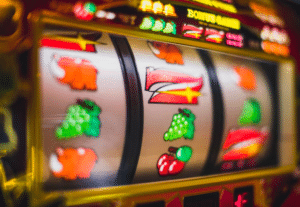
Restoring antique and historical firearms is a meticulous endeavor that demands both technical expertise and a deep appreciation for historical craftsmanship. Sonoran Desert Institute (SDI), accredited by the Distance Education Accrediting Commission (DEAC), offers comprehensive firearms technology programs that equip students with skills applicable to restoration projects. Courses such as “Firearms Finishes and Engraving” provide foundational knowledge beneficial for preserving the integrity of historic weapons. Gunsmiths undertaking restoration must carefully balance modern techniques with the imperative to maintain a firearm’s original authenticity. Whether working on a rare 19th-century rifle or a vintage handgun, successful restoration hinges on a blend of historical insight and contemporary gunsmithing proficiency.
Restoring historical firearms is not a simple process. Gunsmiths must be highly knowledgeable about the firearms era, design and materials used in its original construction. One of the primary goals in restoration is to maintain as much of the original firearm as possible, only replacing or repairing necessary parts to return it to a functional state. It involves carefully inspecting the gun to determine the extent of damage, wear and corrosion while ensuring that any restoration work does not compromise the firearm’s historical value. A gunsmith must also be equipped with a deep understanding of the era in which the firearm was produced to accurately replicate any original details.
Restoration Techniques: Balancing Authenticity and Functionality
One of the first steps in restoring a historical firearm is identifying the materials that were originally used in its construction. Antique firearms are often made from high-quality materials such as steel, brass and wood, each requiring specific restoration techniques. When restoring steel parts, gunsmiths must be careful not to remove too much material, which could affect the firearm’s structural integrity. In many cases, metal parts are cleaned using non-abrasive methods, such as ultrasonic cleaning, to remove rust and corrosion without damaging the underlying surface.
Wooden components, such as stocks and grips, often require specialized care. Gunsmiths use techniques like stock refinishing and recontouring to restore the appearance of the wood while maintaining its original shape and texture. The goal is to preserve the patina, which contributes to the firearm’s historical character, without removing too much of the wood’s original surface. Often, the wood is carefully cleaned and then refinished with oils or waxes that protect the grain and enhance the natural luster.
For more intricate parts, such as engraved patterns or decorative inlays, skilled gunsmiths may use precision tools to restore the firearm’s original details. This process requires a steady hand and a keen eye for detail, as even the slightest mistake can diminish the piece’s value and authenticity. Gunsmiths may also employ recasting techniques to replace lost or damaged parts, ensuring that the new components match the original design as closely as possible.
Challenges in Restoring Historical Firearms
Restoring historical firearms presents several challenges, particularly when dealing with rare or delicate pieces. One of the main difficulties is finding replacement parts that are true to the original design. Many older firearms may have been produced in limited quantities or no longer have original parts available. In such cases, gunsmiths may need to fabricate new components that match the original specifications as closely as possible. It often involves significant skill in metalworking, machining and even handcrafting parts to fit the firearm.
Another challenge is the risk of over-restoration, which can significantly reduce the firearm’s historical value. Over-restoration occurs when too much of the original surface is altered or replaced, which can diminish the firearm’s authenticity. Gunsmiths must carefully consider how much work is necessary to restore the firearm to its original condition without compromising its historical integrity. It is important to note that some collectors prefer firearms that show signs of age and wear, as this adds to the piece’s story and character. Striking the right balance between restoring functionality and preserving the firearm’s historical appeal is an essential skill for any gunsmith involved in historic firearm restoration.
Ethical Considerations: Preserving History for Future Generations
The ethical considerations involved in restoring historical firearms are complex. Many gunsmiths approach restoration with the mindset that they are custodians of history, ensuring that the craftsmanship and cultural significance of the firearm are preserved for future generations. In some cases, collectors and museums may require that firearms be restored to working condition, but this should never be done at the expense of the firearm’s authenticity. Gunsmiths must always consider the long-term implications of their work and avoid making irreversible changes that would alter the firearm’s historical value.
Another ethical consideration is the documentation of any restoration work performed. It is essential for gunsmiths to carefully document the changes made during the restoration process, including parts replaced, materials used and the techniques employed. This documentation not only serves as a record for future reference but also helps to maintain transparency about the firearm’s history. Proper documentation ensures that the provenance of the firearm is preserved and that any future owners or collectors are aware of the restoration work performed.
Sonoran Desert Institute offers comprehensive firearms technology programs that equip students with skills applicable to the restoration of historical firearms. Courses such as “Firearms Finishes and Engraving” and “Customizing & Woodworking” provide foundational knowledge beneficial for preserving the integrity of antique weapons. Students learn to balance modern restoration techniques with the need to maintain a firearm’s original authenticity. By mastering these skills, graduates are prepared to address the challenges of preserving historical firearms for future generations.
Restoring historic firearms is a highly specialized skill that requires a deep understanding of both craftsmanship and history. Gunsmiths engaged in this work must carefully balance the need for functionality with the desire to maintain authenticity. From stock refinishing and barrel restoration to fabricating missing parts, every step of the process demands precision, care and an appreciation for the legacy these firearms represent. Ethical considerations are at the heart of historic firearm restoration, ensuring that the craftsmanship of the past is preserved while respecting the history and significance of each piece. Through proper restoration techniques and a respect for history, gunsmiths help ensure that these firearms remain valuable, functional and appreciated for generations to come.





